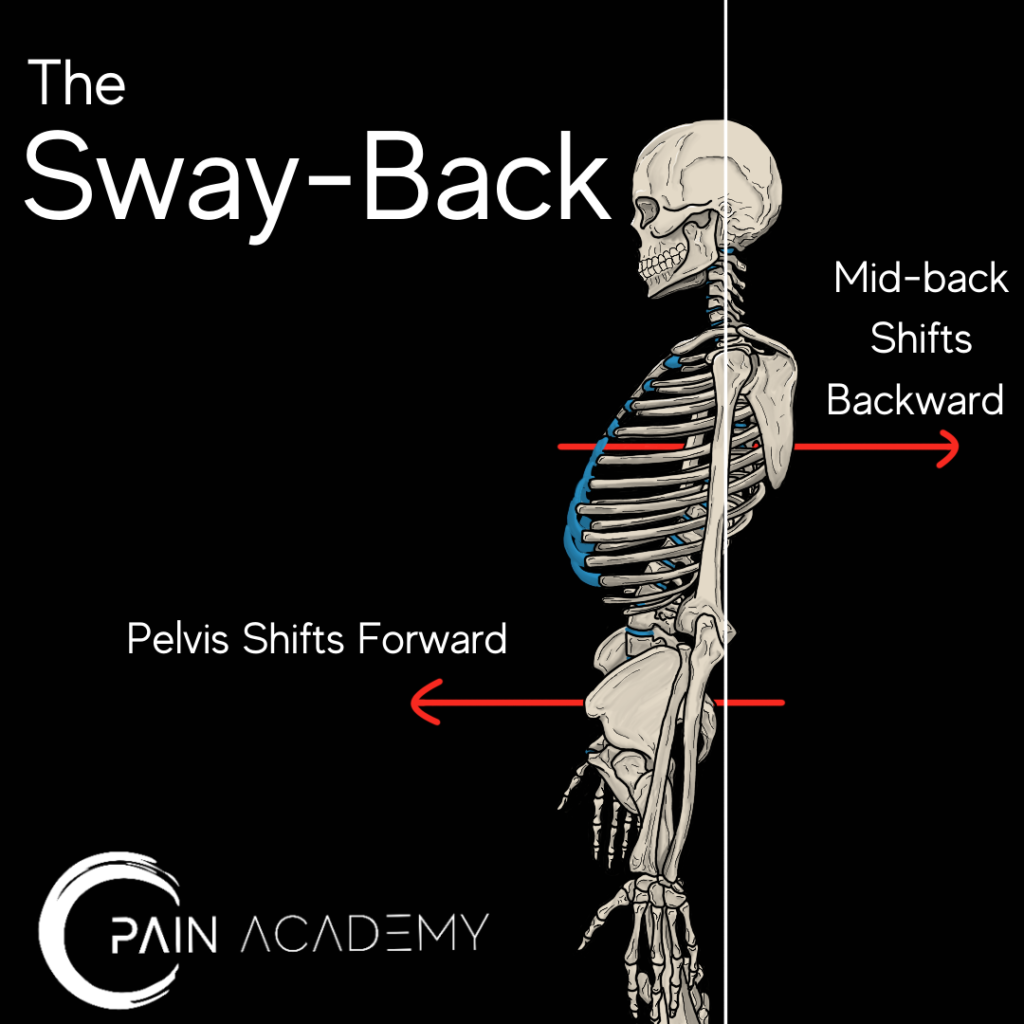
We have muscles in our front, back, and on both sides of our body.
When these muscles work together, our body can stay upright and move with ease, pain-free.
A balanced body will also properly distribute tension and force where it should be.
If the front works harder than the back, or one side works more than the other, tension and force are no longer properly distributed. This imbalance of muscles forces our bones and joints go out of alignment. This can cause a lot of pain as well as damage to our soft tissues, which changes the way we move and knocks us out of alignment further.
For this post, let’s take a closer look at a common postural deviation – The Sway Back.
In the sway-back posture, the pelvis typically shifts forward in front of the ankles and ears as the mid-back shifts backward.
This creates a sheering effect in the lower back as well as places the hips, pelvis, and spine in extension overload.
Extension overload injuries can most commonly be found in the lower back as the bones, discs, and ligaments, undergo continual compressive forces in nearly every movement, but as you know by now following this account for some time – nothing works in isolation.
A sway-back position isn’t limited to just lower back pain. The knees, hips, arches, ankles, shoulders, elbows, wrists, and neck can all experience pain and problems if the pelvis shifts far enough forward. Basically, Our entire body has to compensate in some way shape or form to accommodate for this imbalance.
Working with a range of subtle to extreme sway-back postures, I’ve found the most effective way to restore the body when this happens is to do 2 things simultaneously…
1. Put the pelvis back into a neutral alignment.
2. Restore proper movement and function to all of the surrounding joints.
When both of these are done at the same time, the entire body is repositioned so the right muscles can start doing the right work again. It’s like going after the cause and effect all at once.
If you want our help in changing the way you are moving and feeling, click here and take the first step by starting off with our Pain Assessment Toolkit. You’ll learn 6 specific assessments to take a better look at what your body is doing and why. This information will then help you develop the perfect strategy to start feeling better.